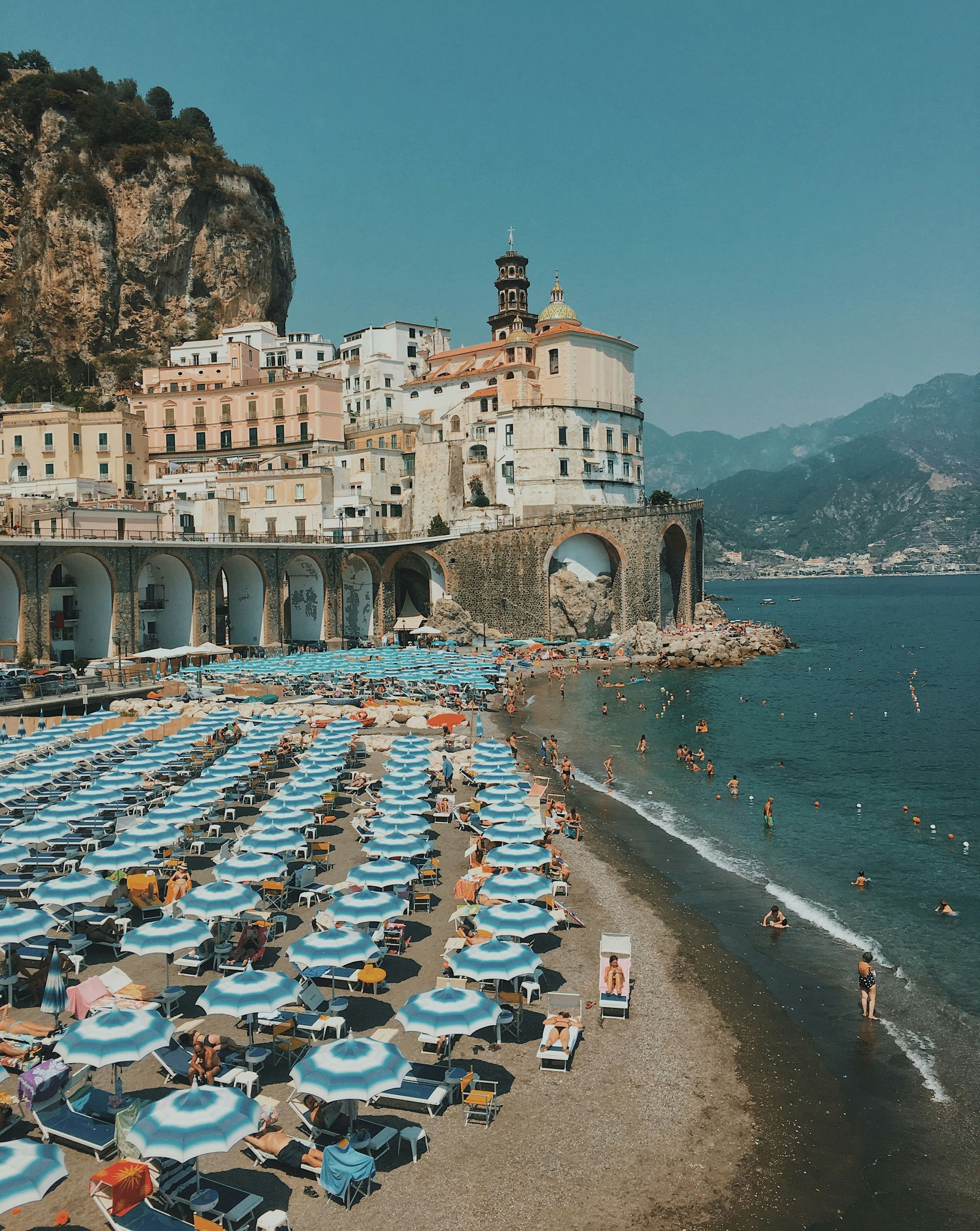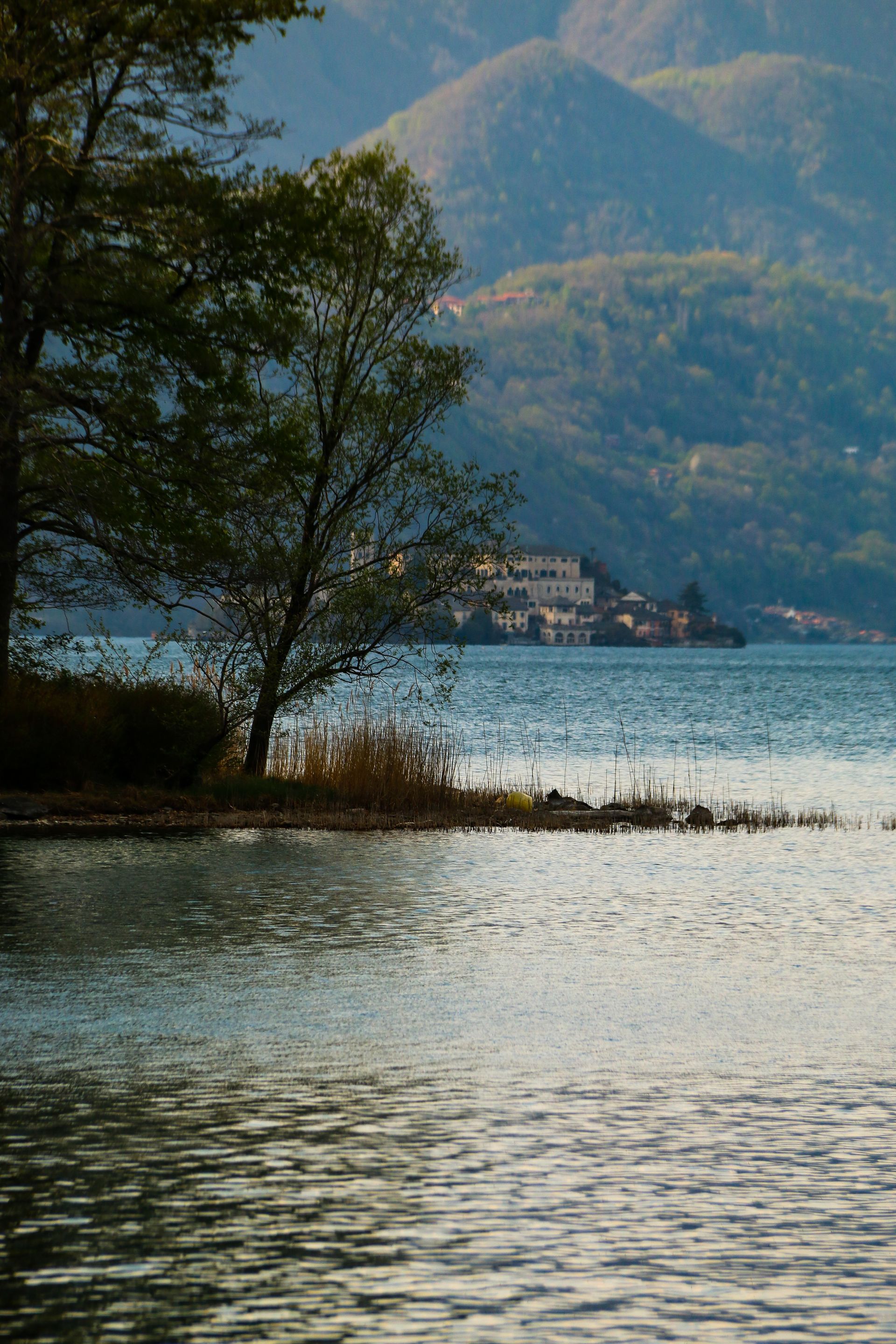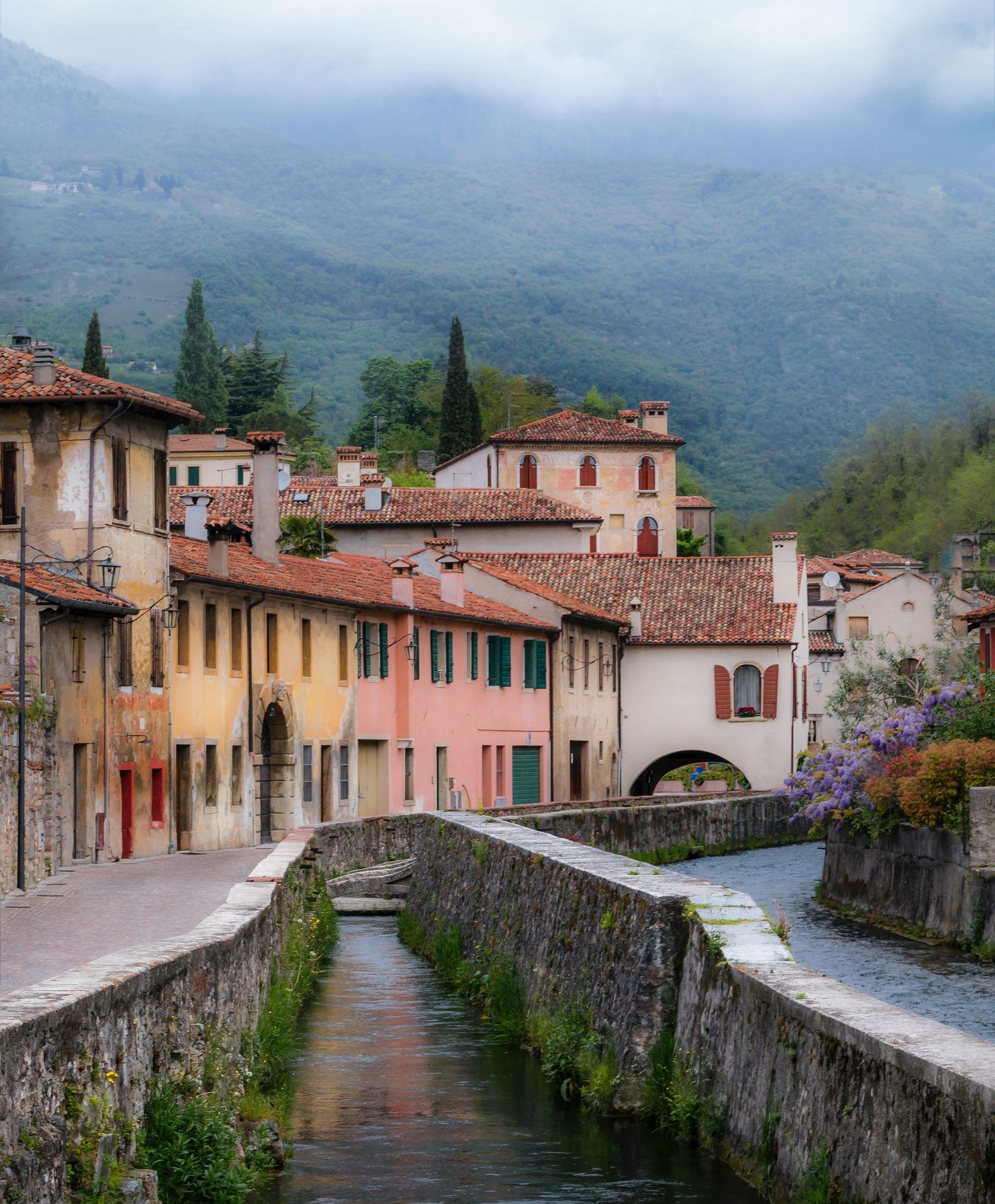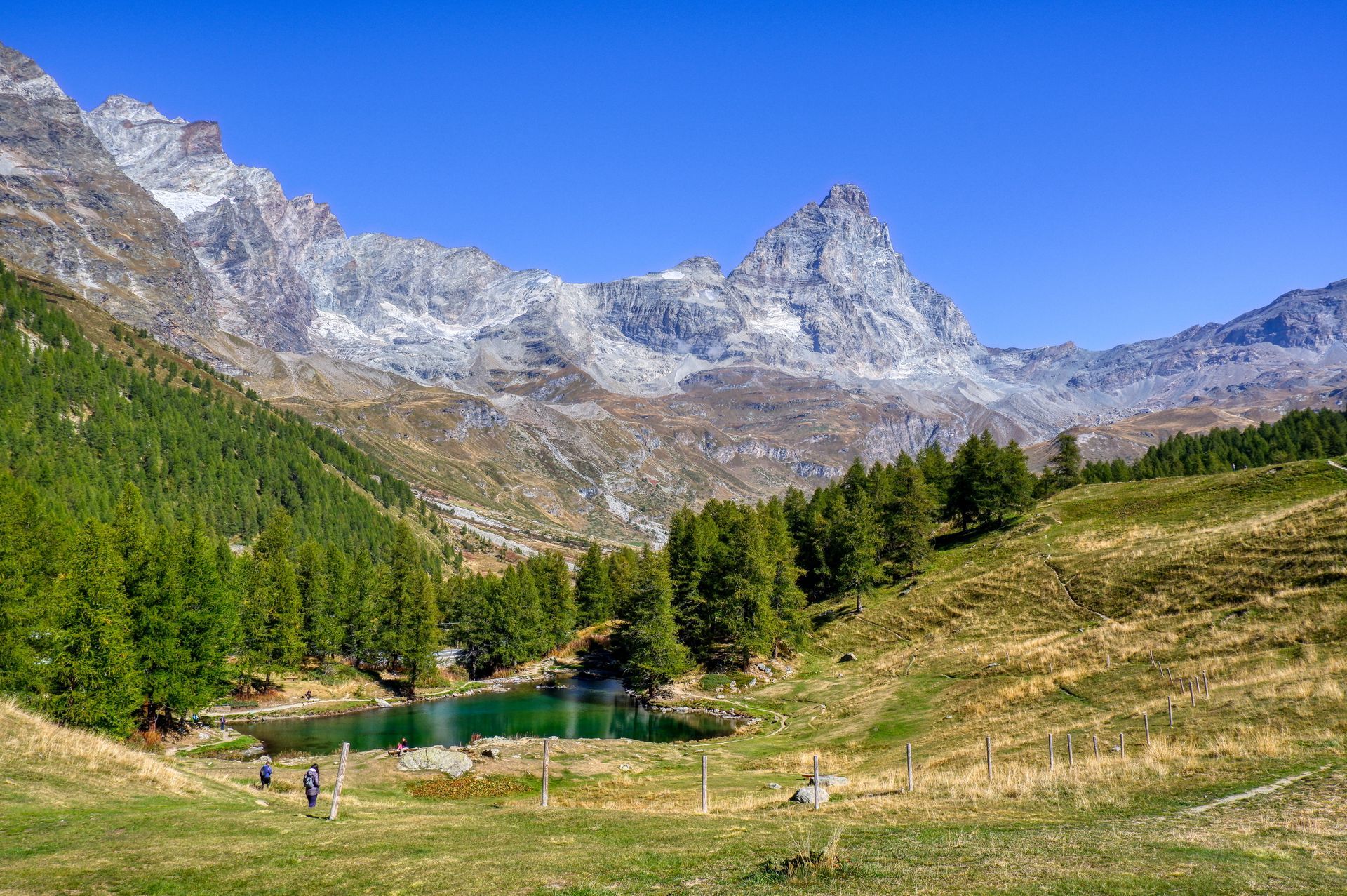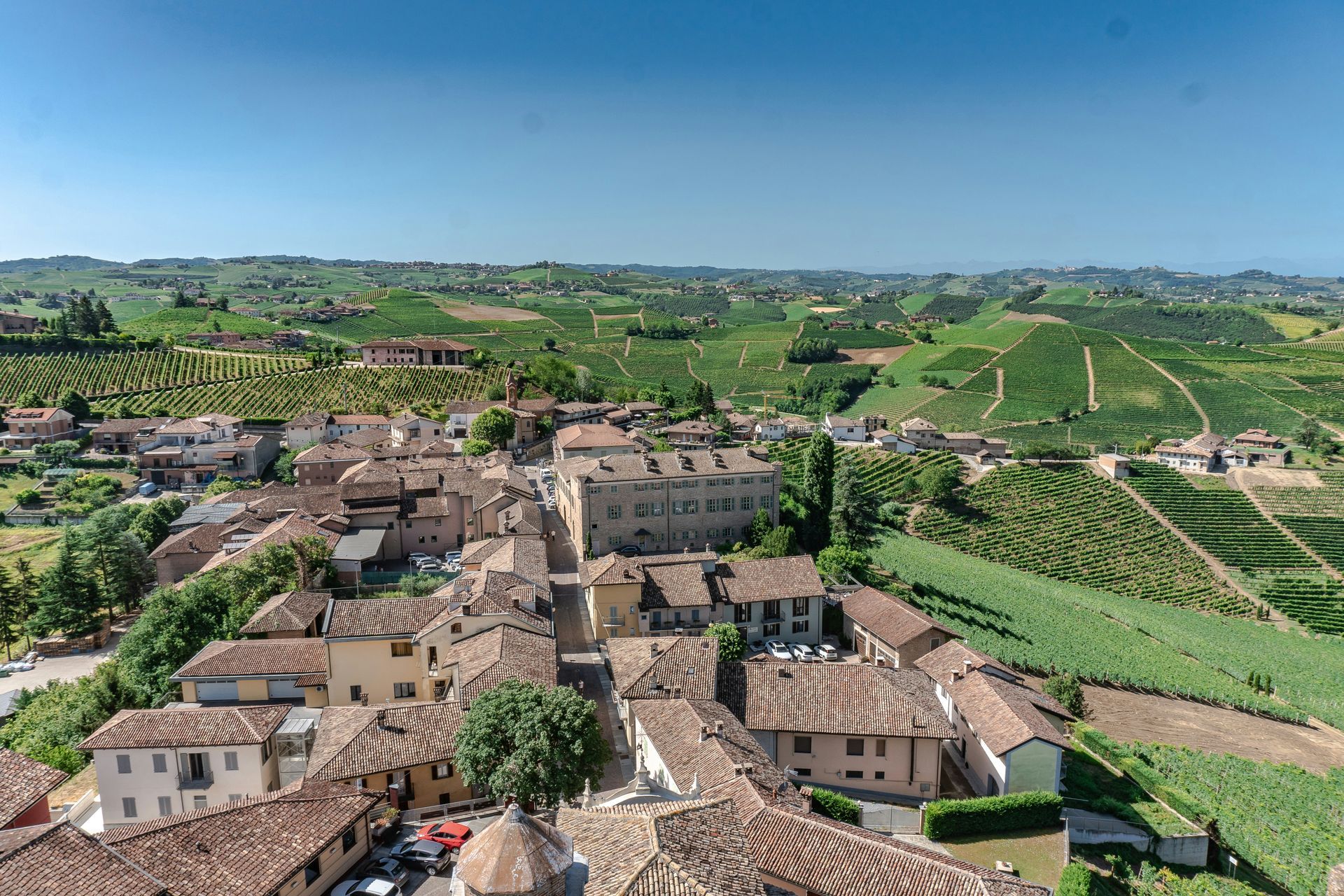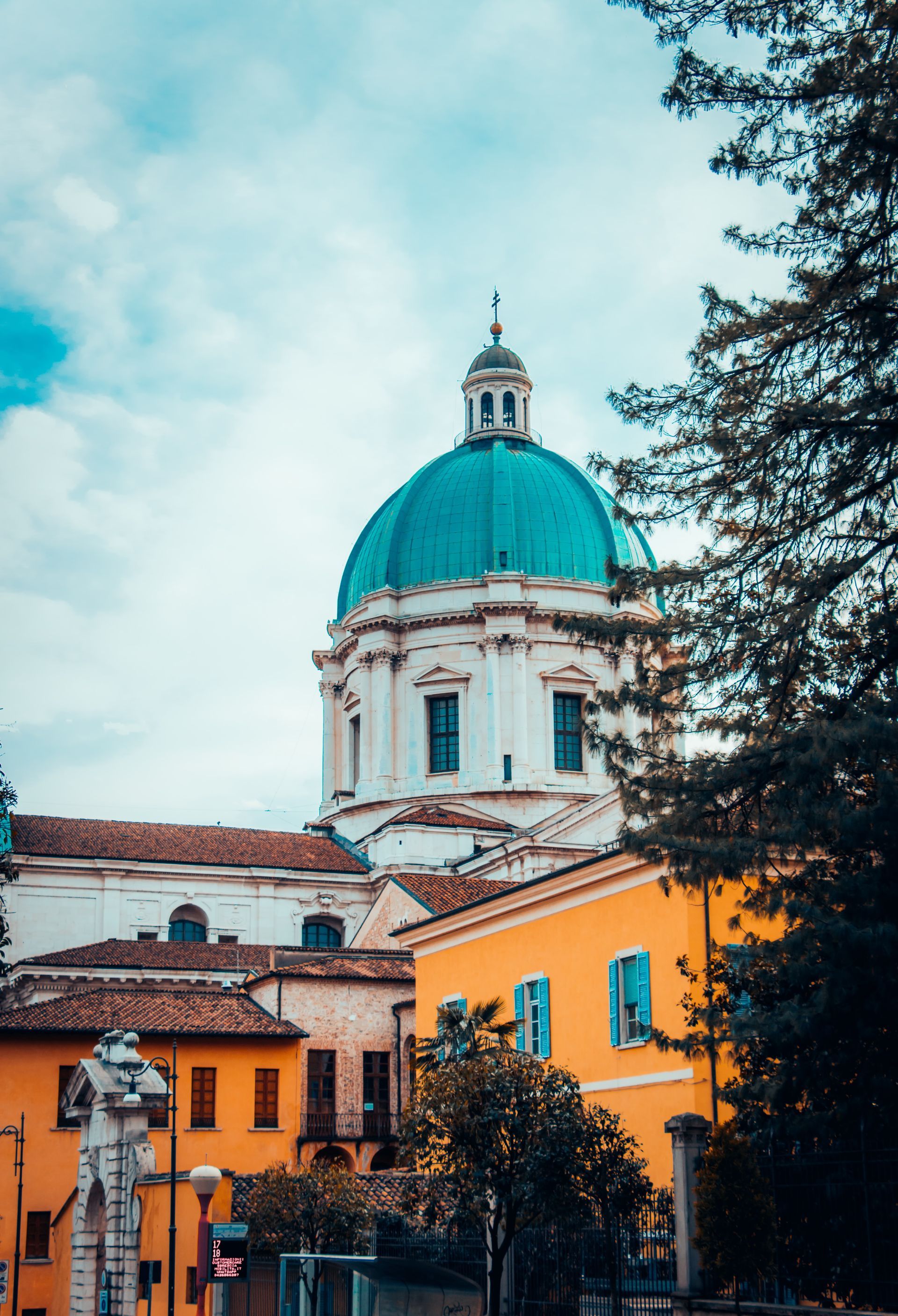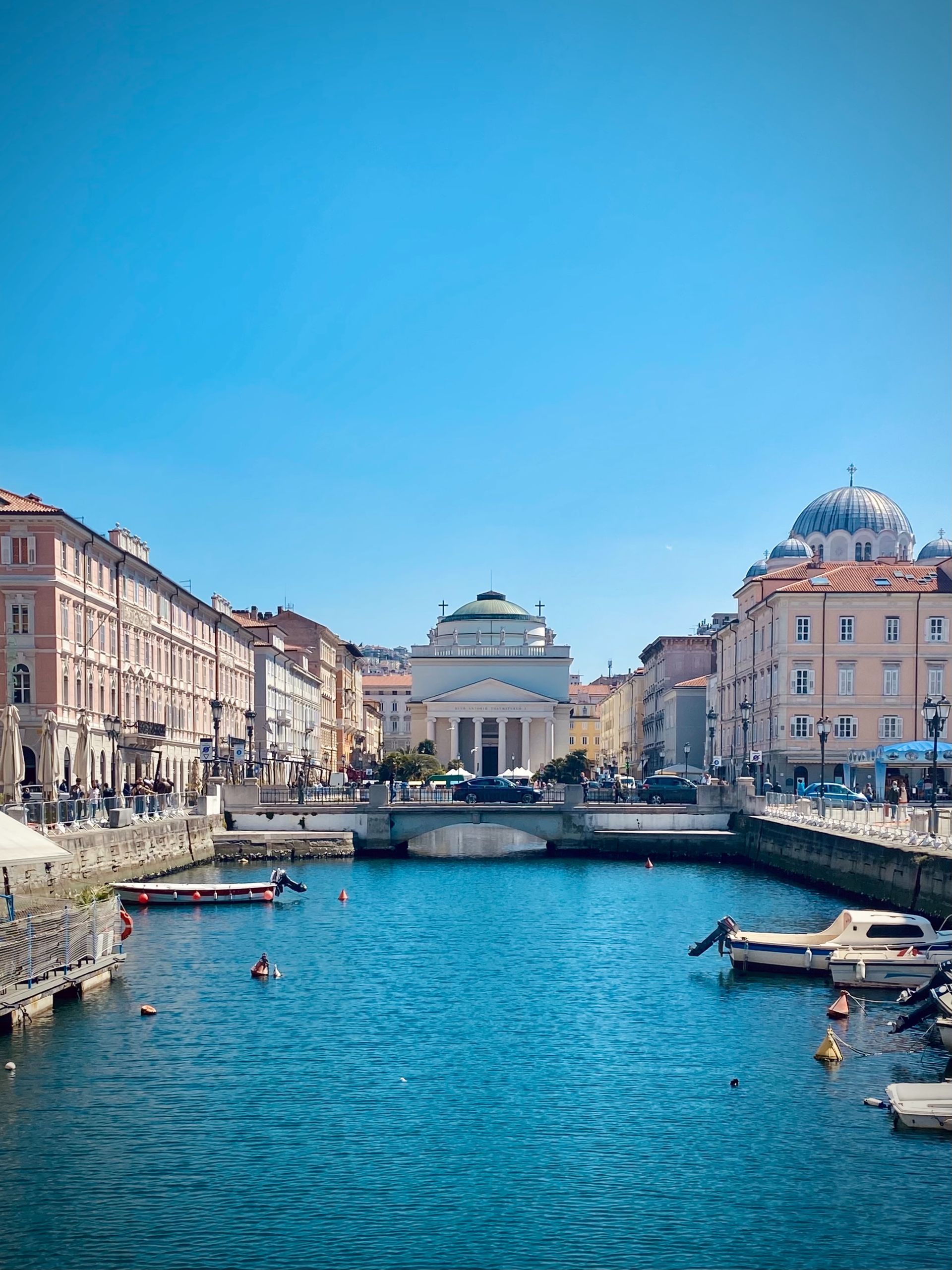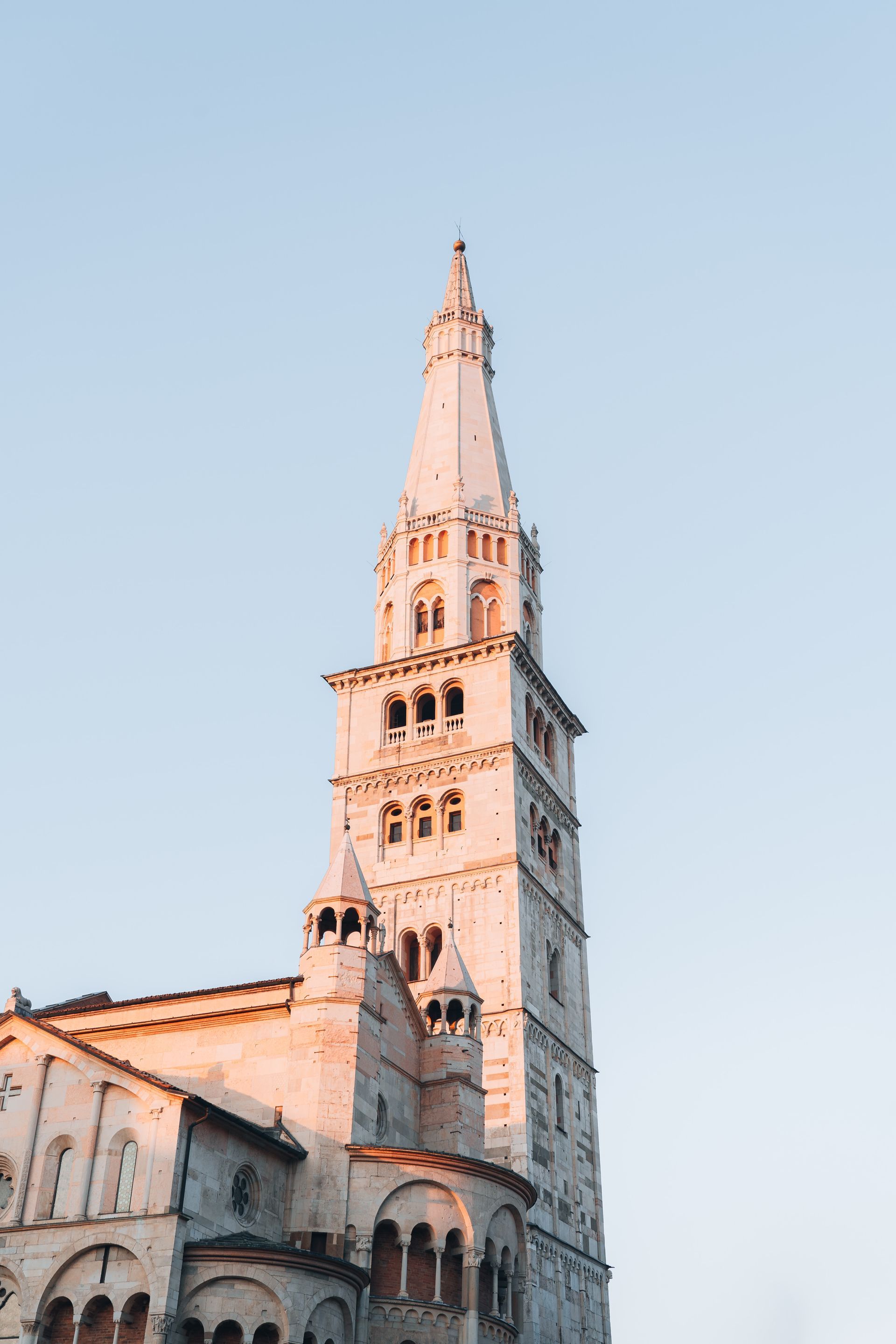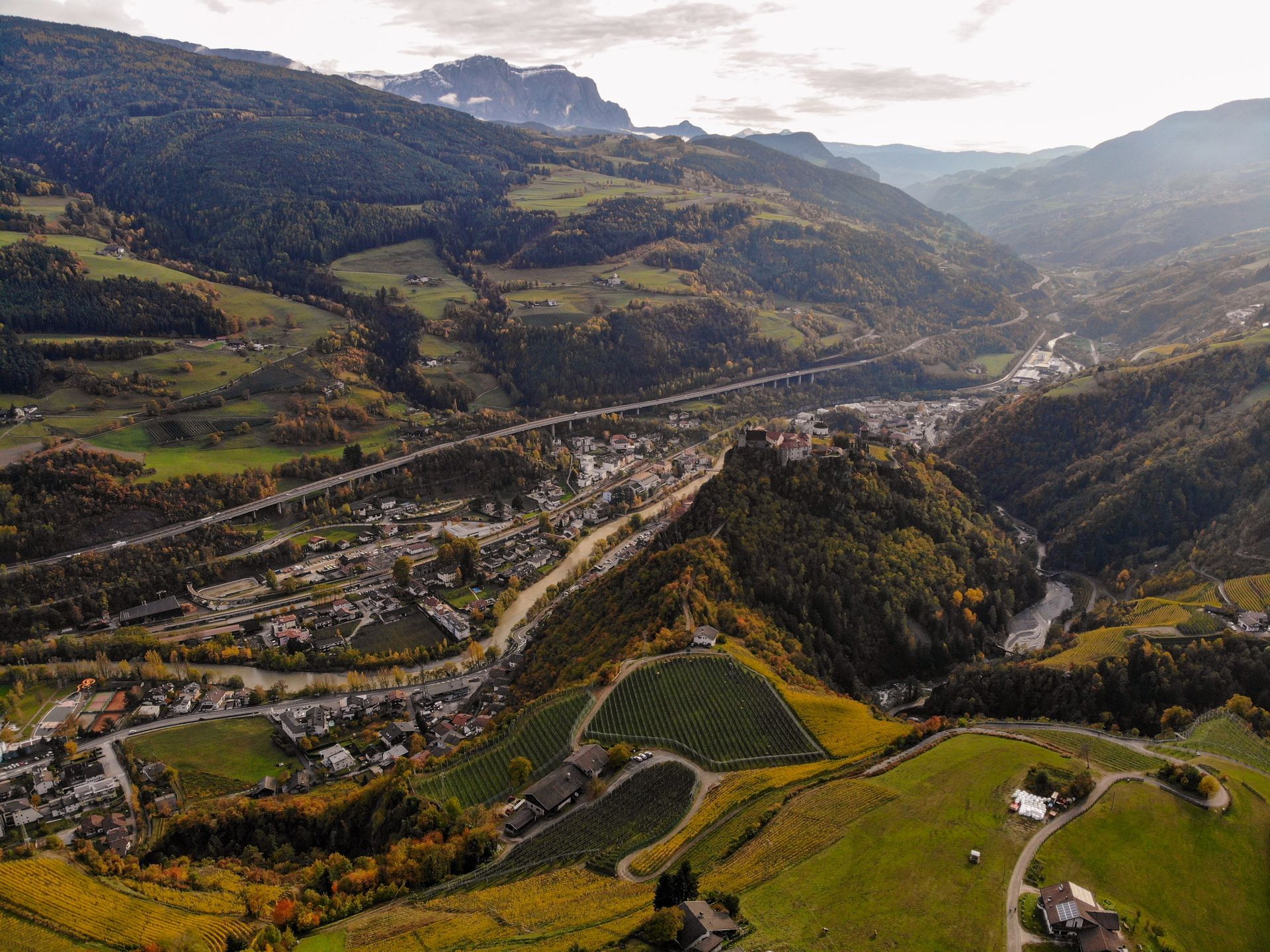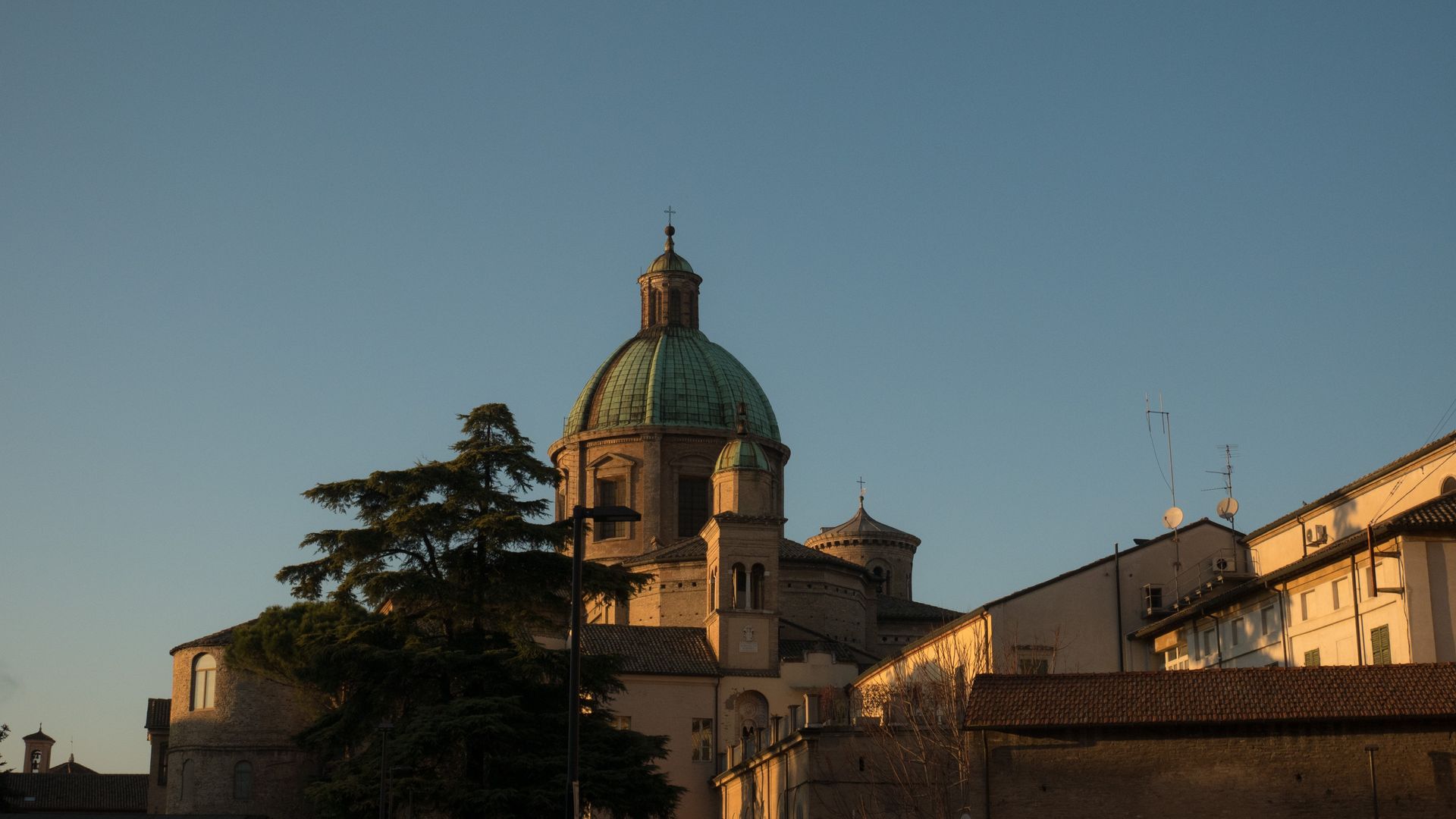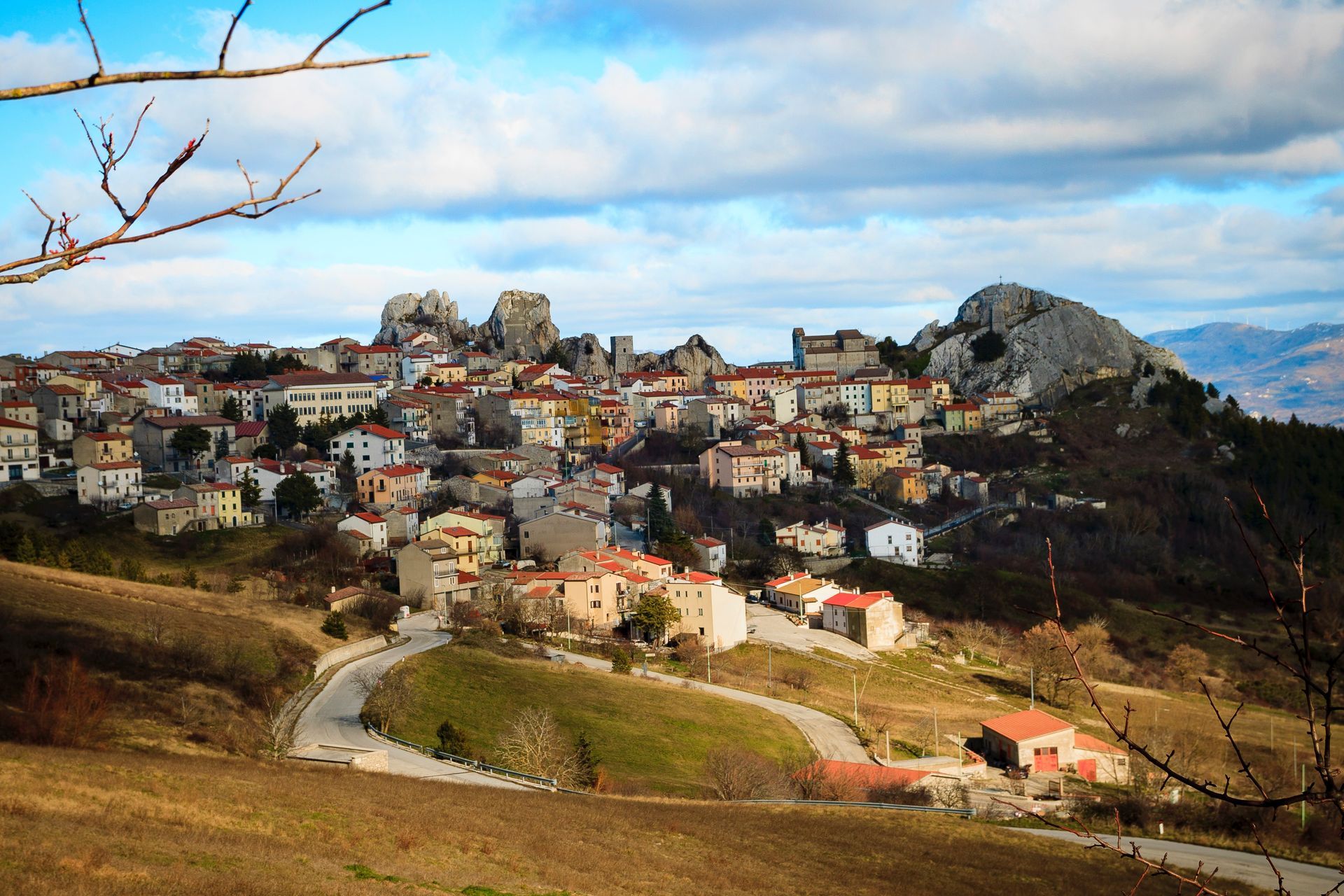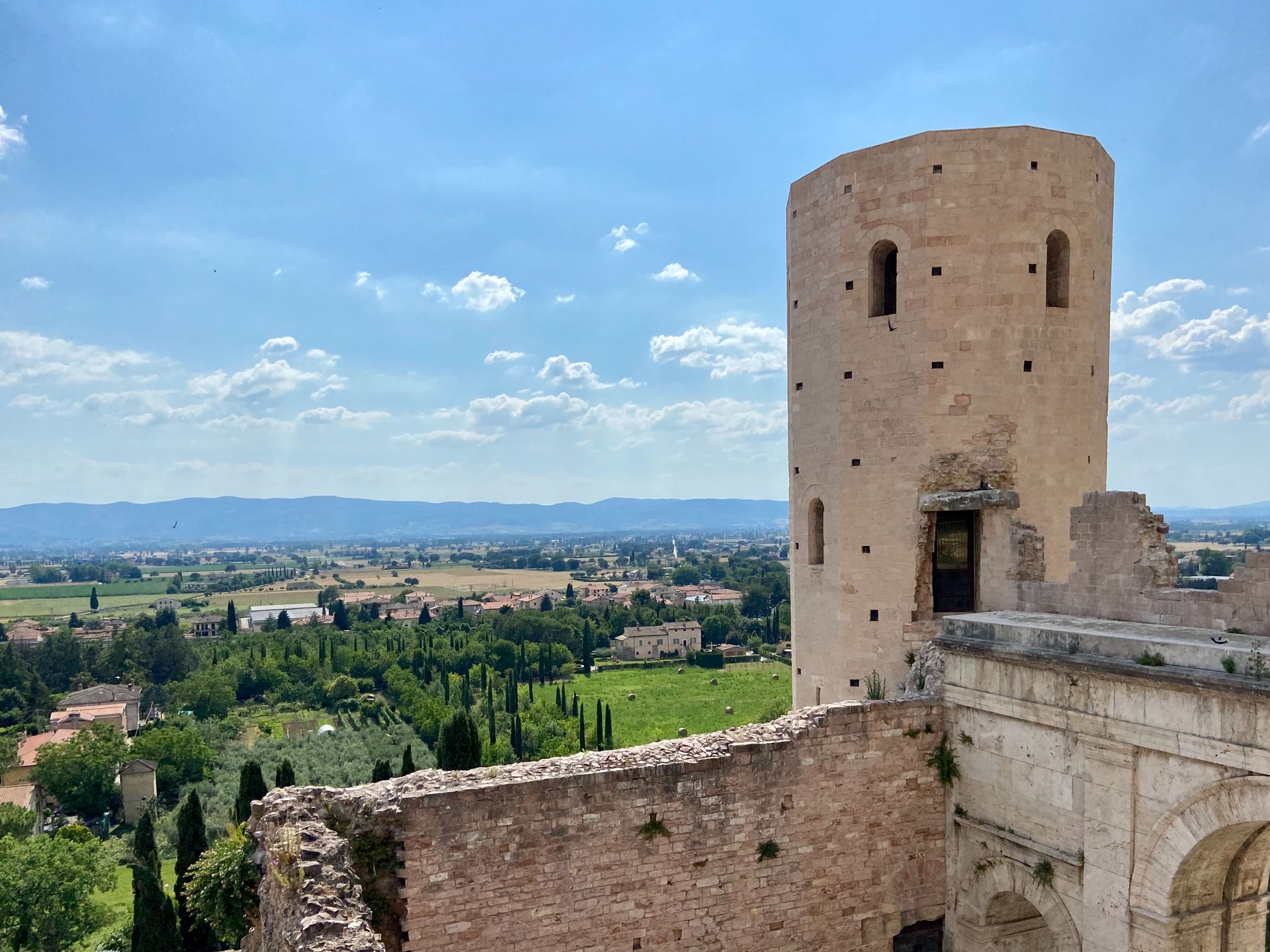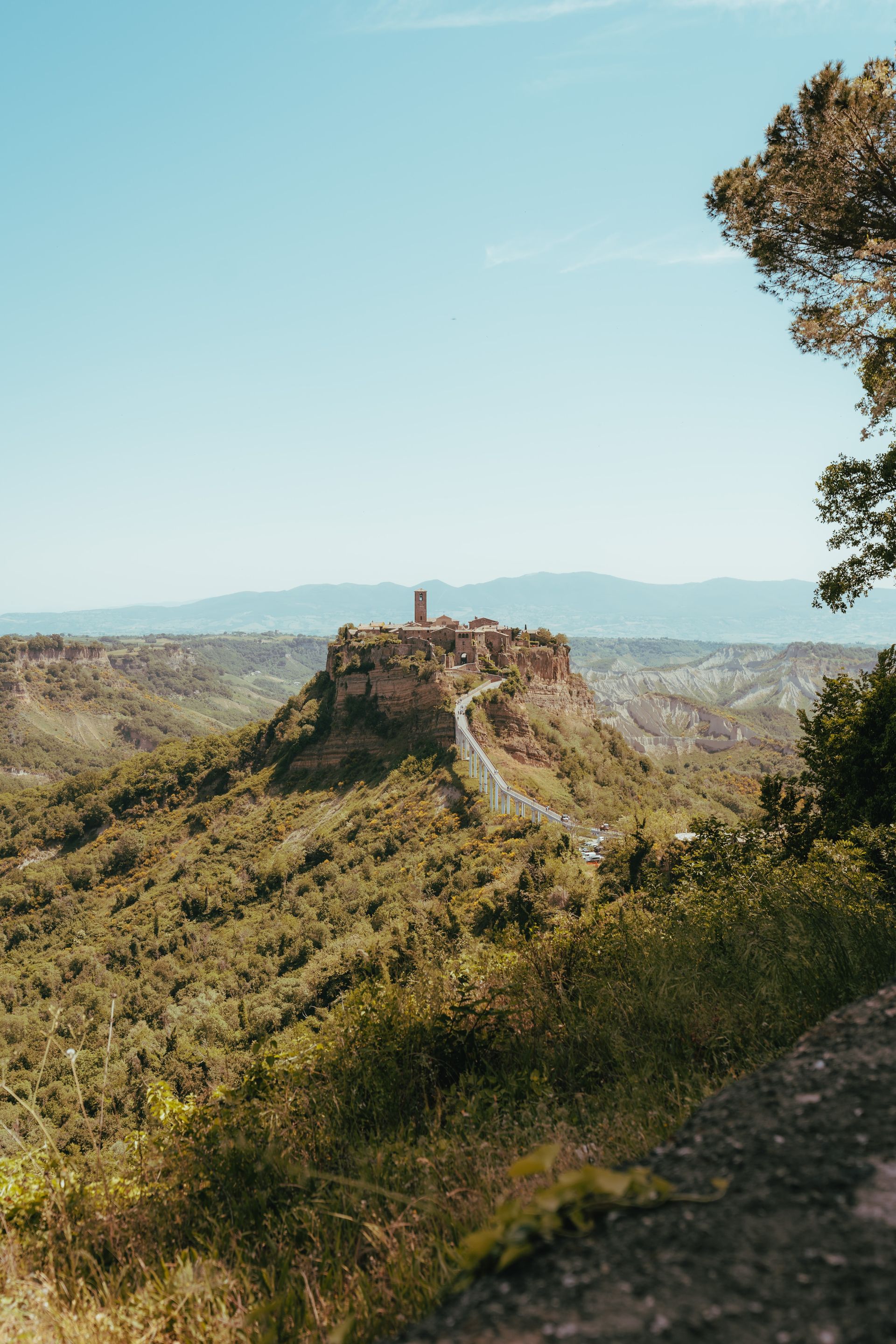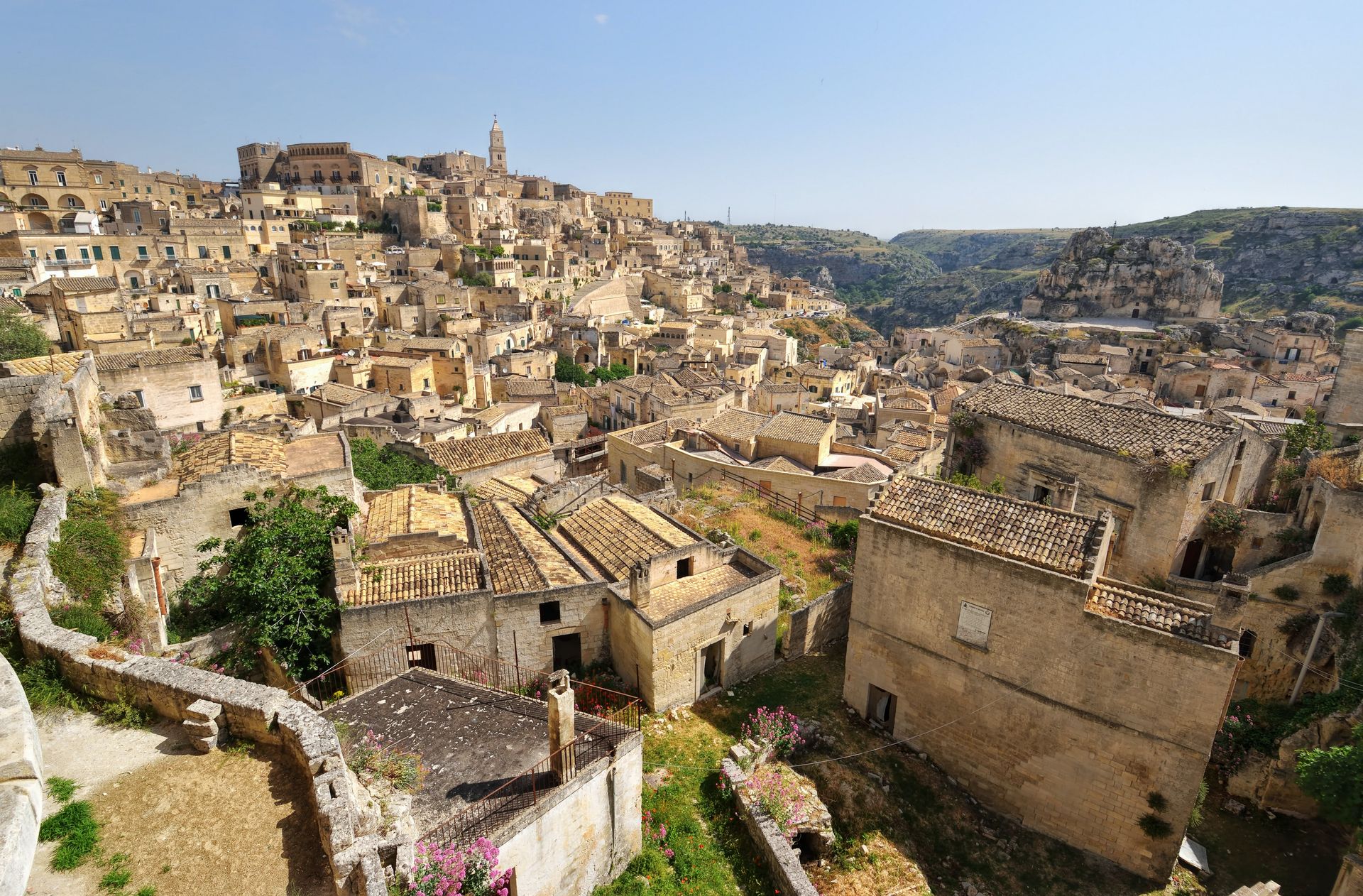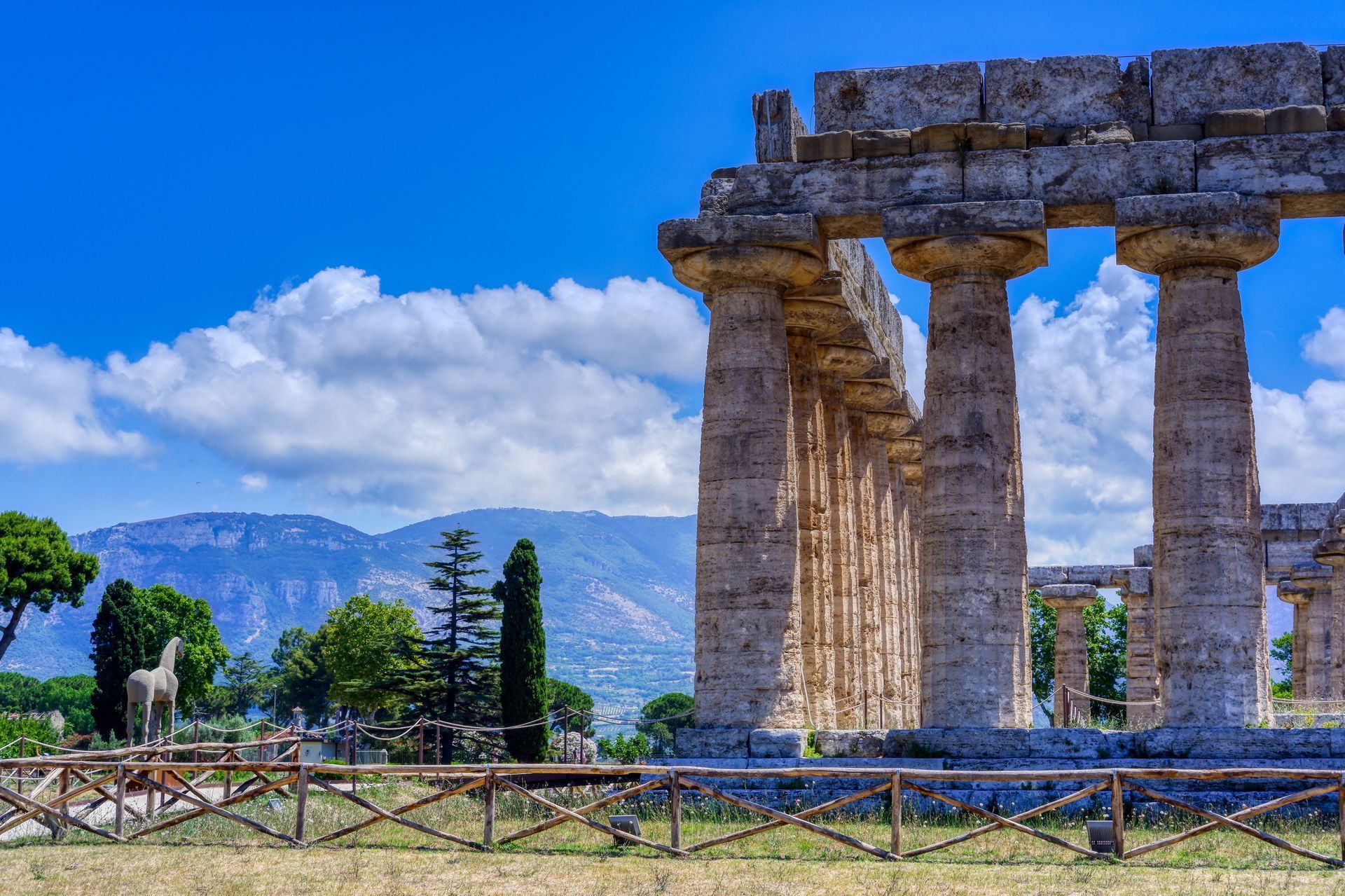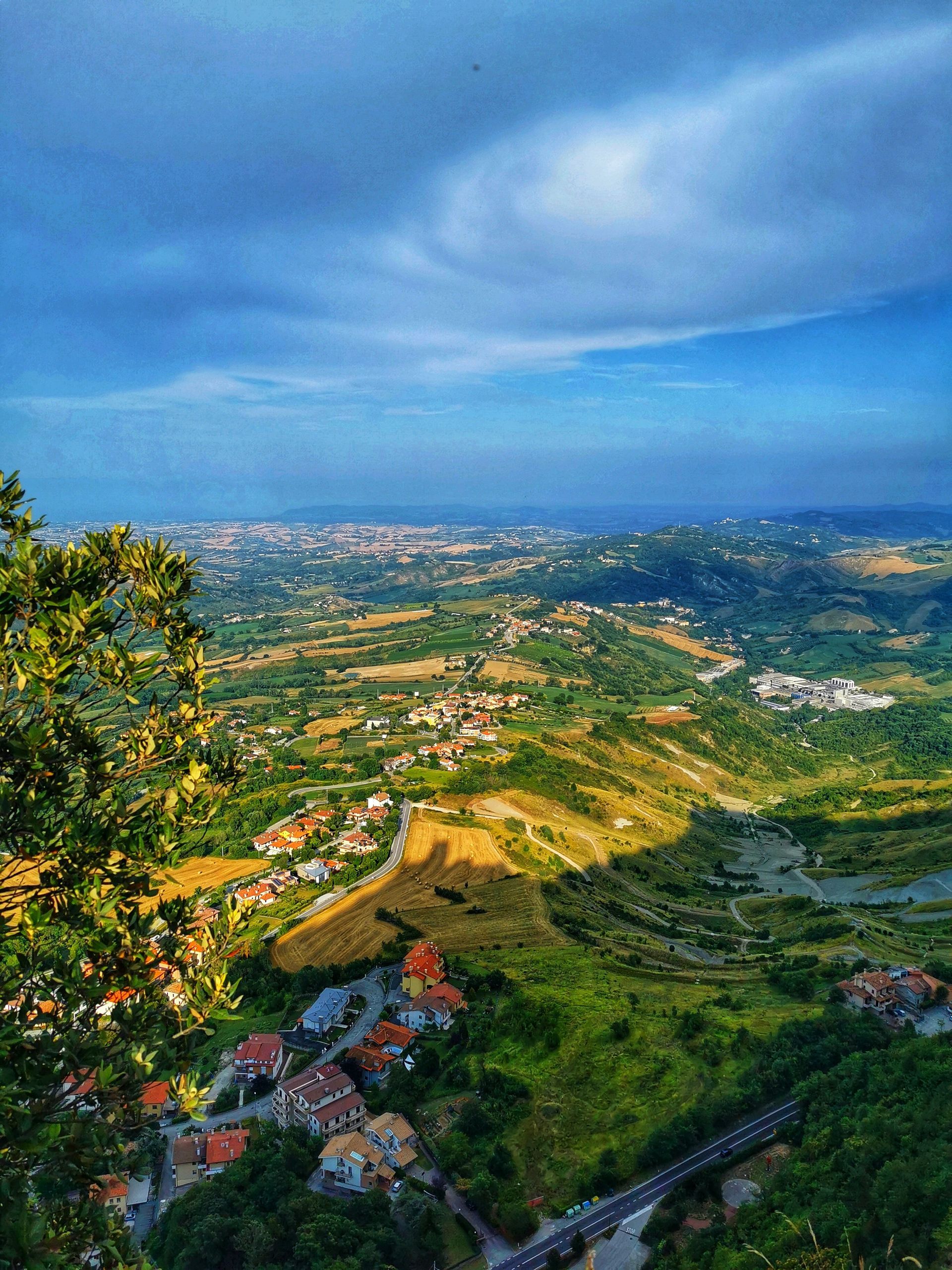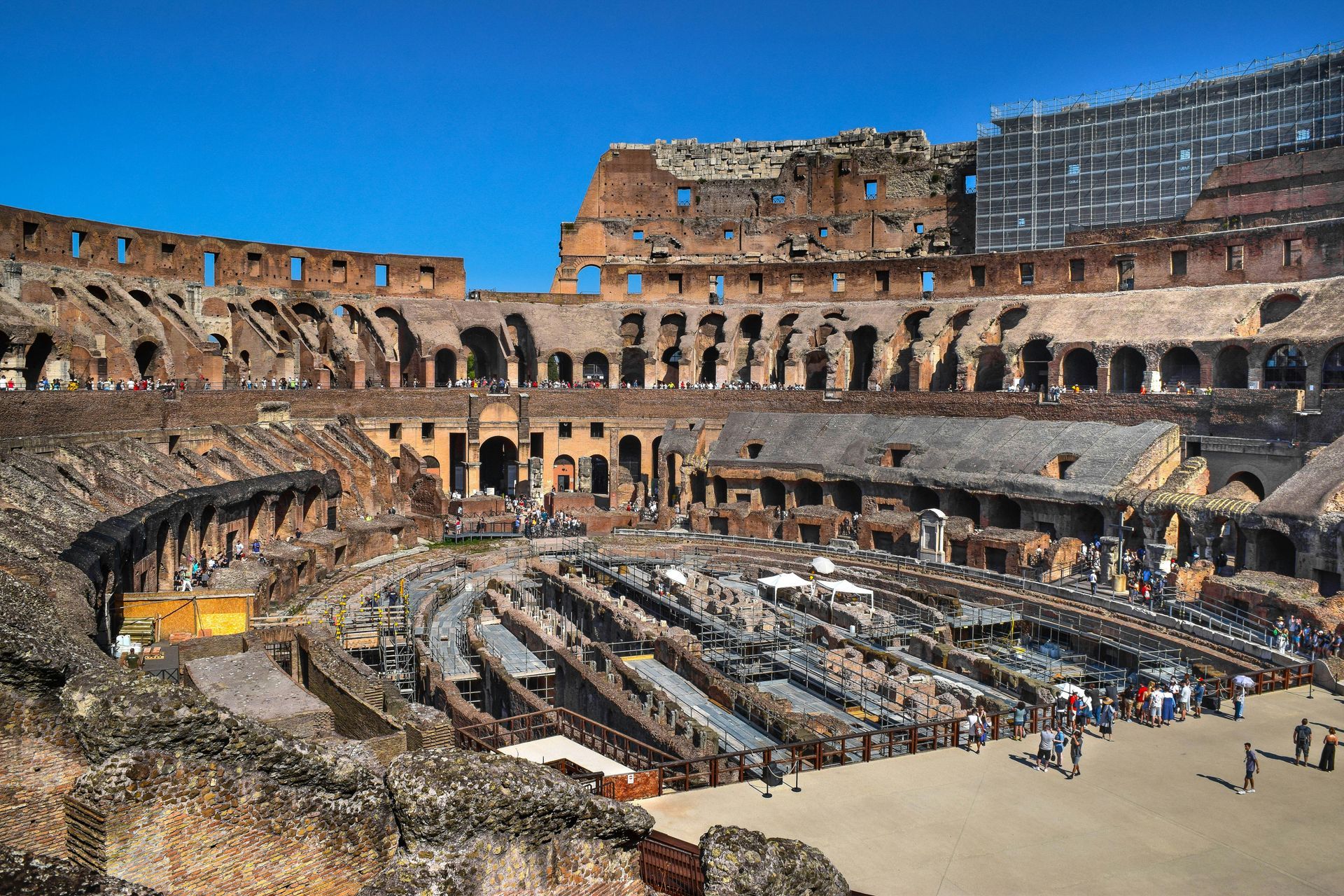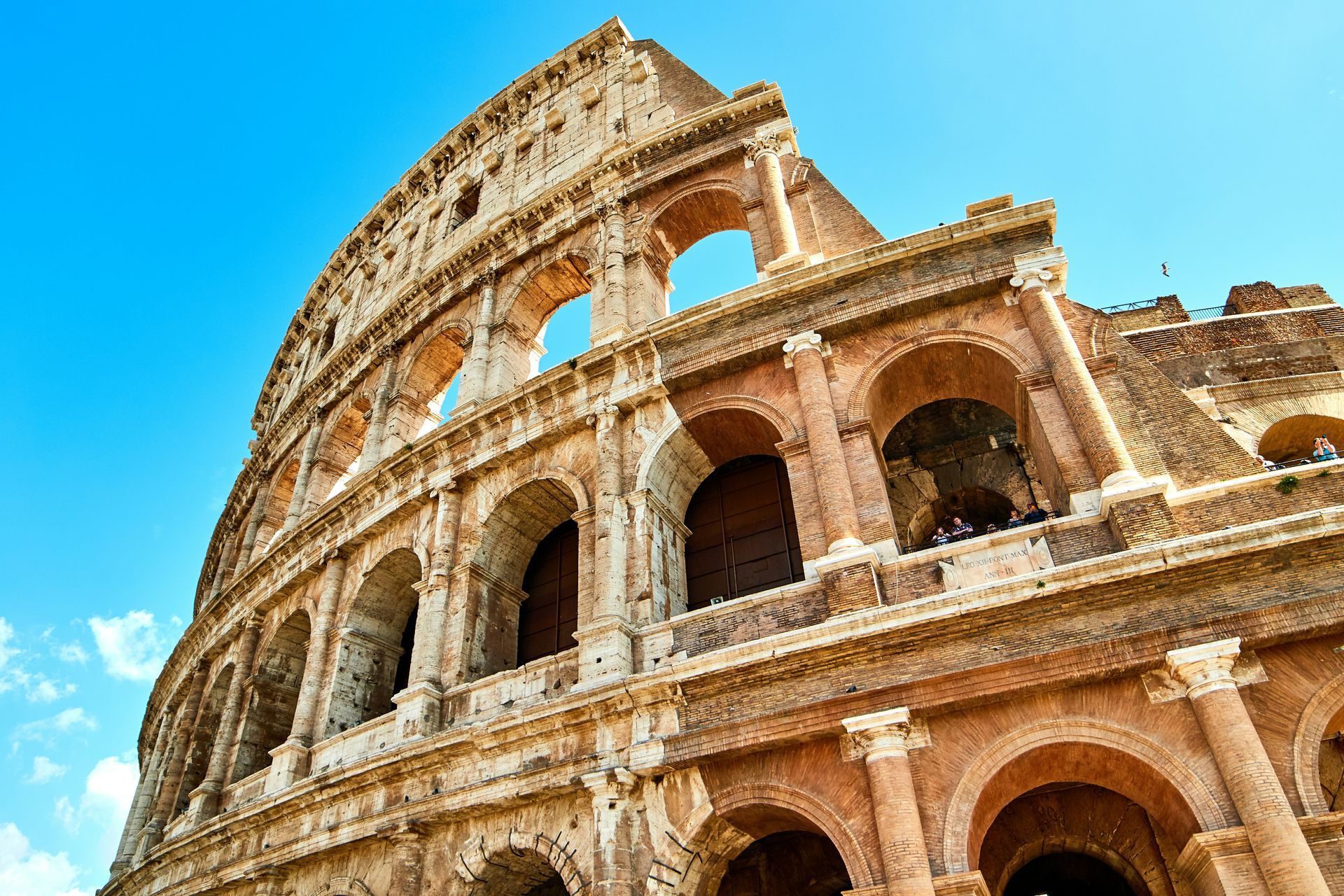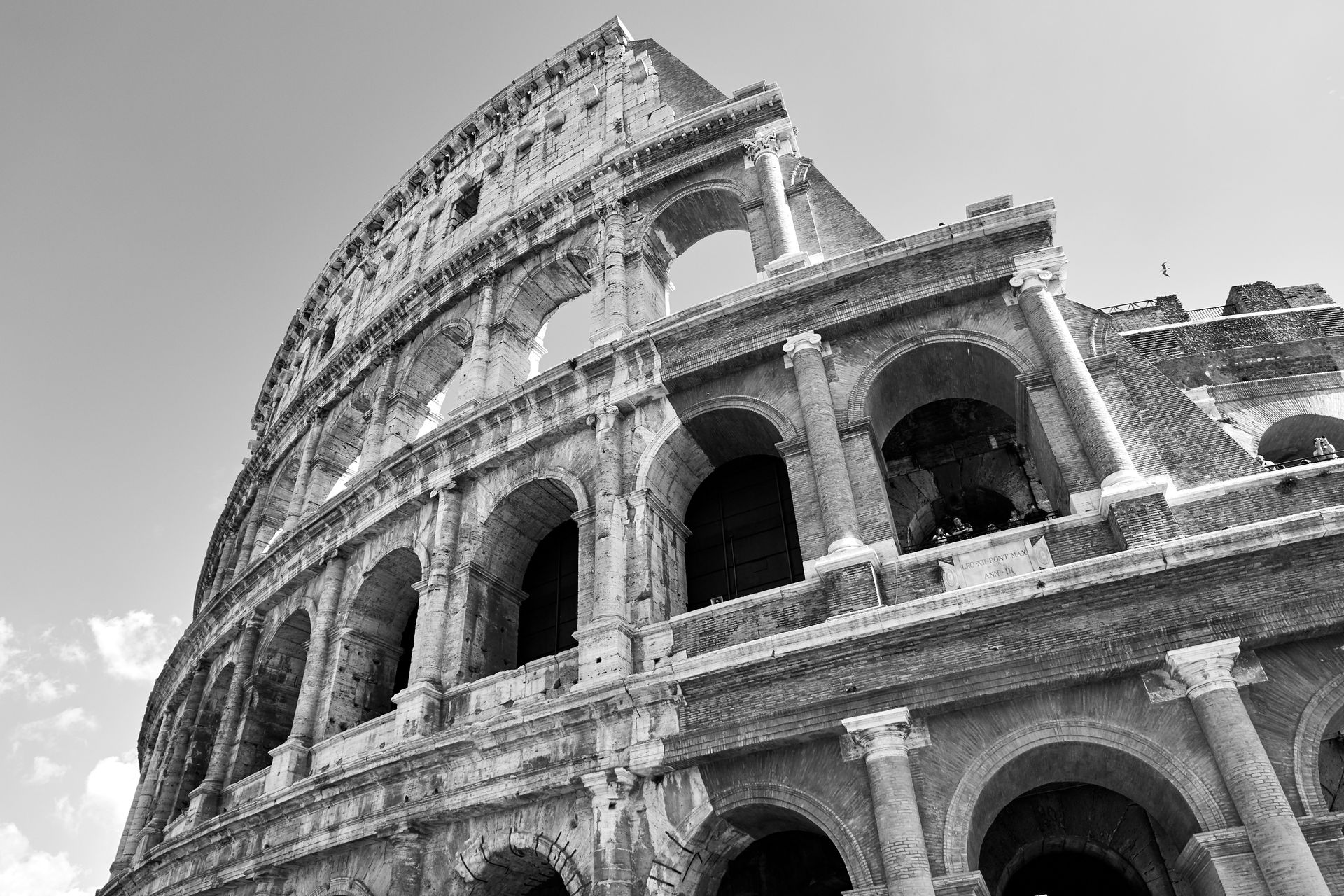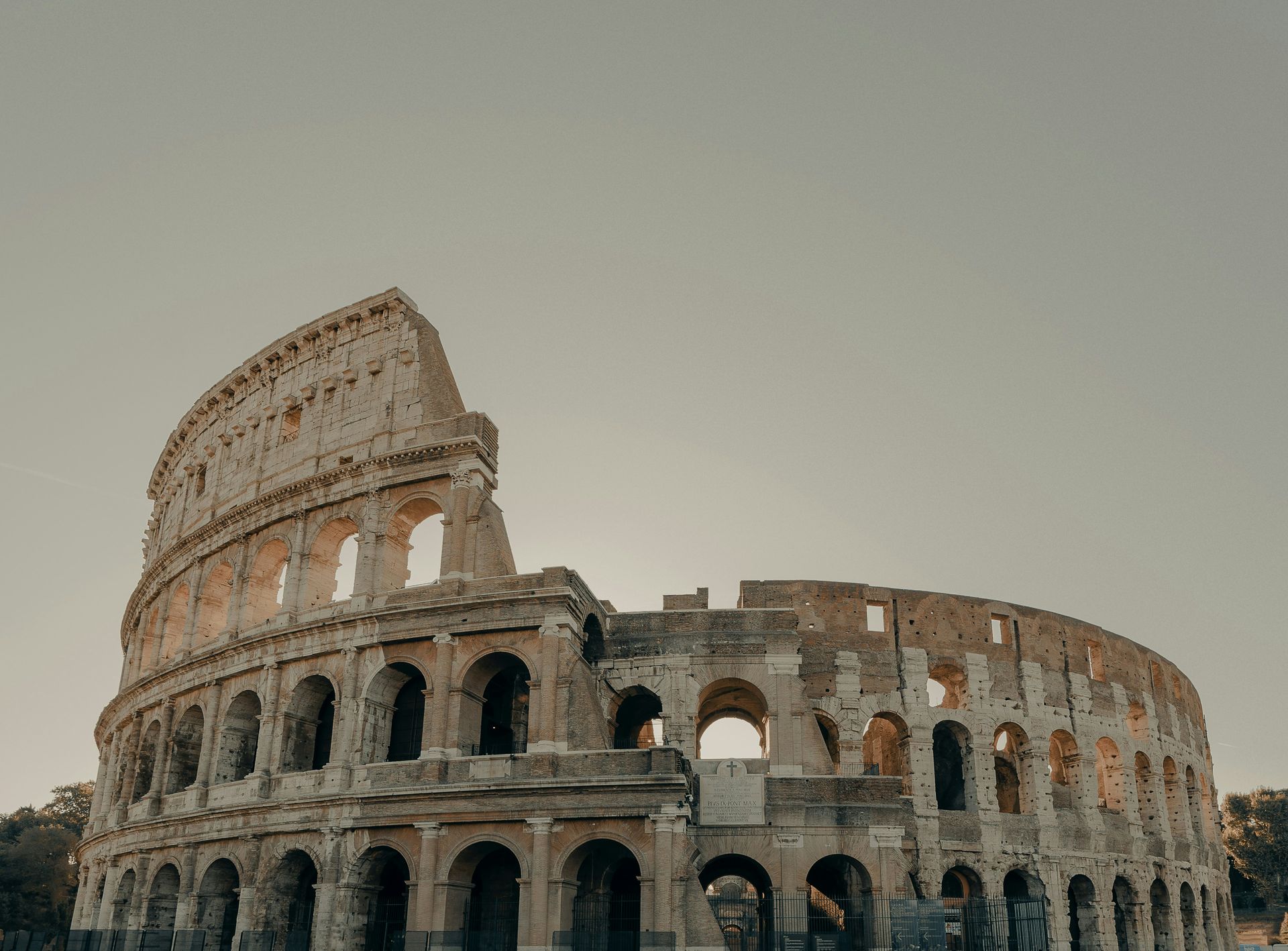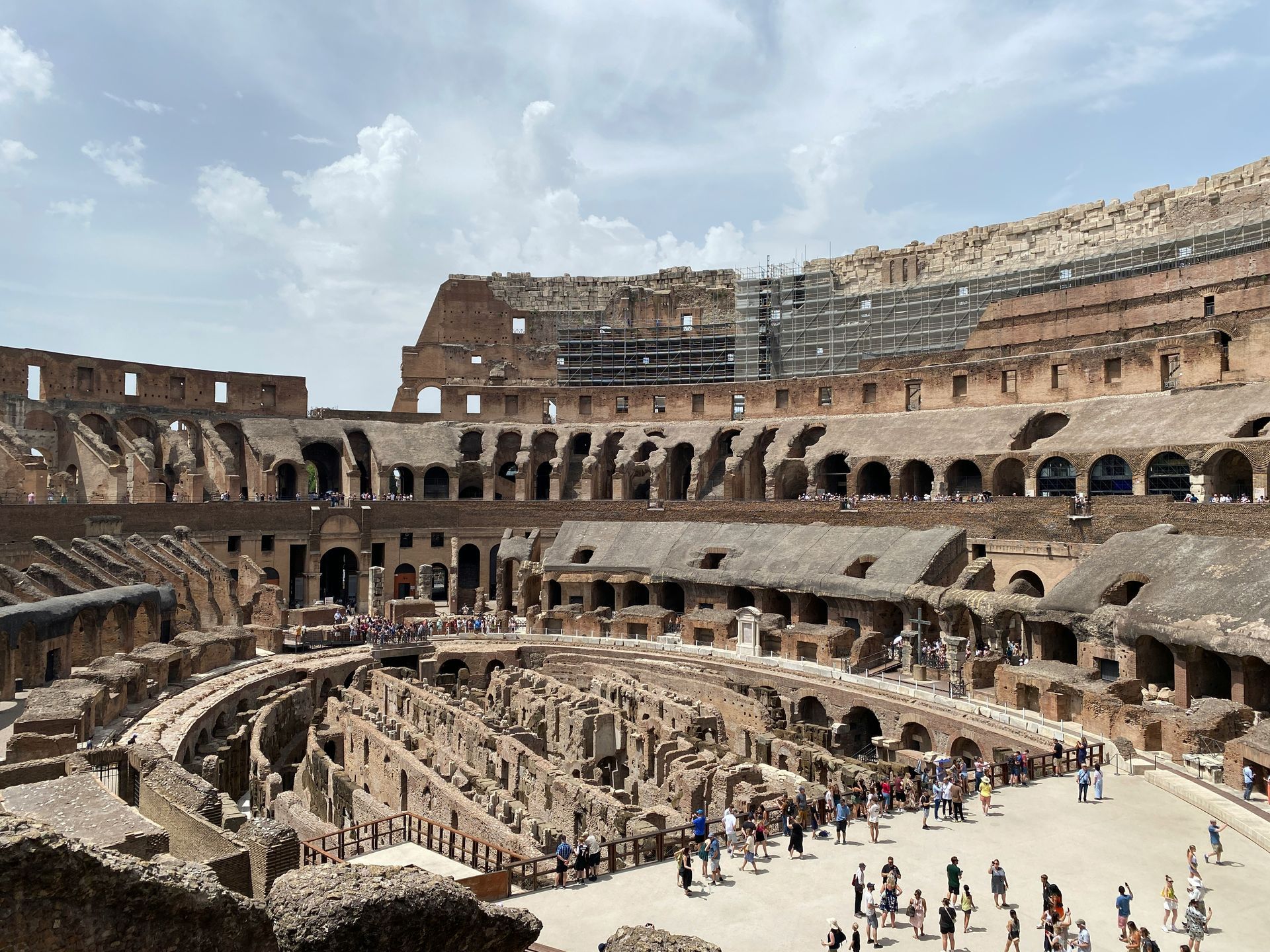Spreading Smile across the globe
Hidden Gems of Northern Italy
Hidden Gems of Italy are a testament to the country's diverse and enchanting beauty, often concealed from the traditional tourist routes. While Italy is celebrated for its iconic cities like Rome, Florence, Venice, and the Amalfi and Cinque Terre coasts, it's the lesser-known destinations that promise a unique journey. These unexplored regions offer travellers a chance to experience Italy's authentic culinary delights, rich historical narratives, and stunning natural landscapes. From the northern reaches to the southern shores, these Hidden Gems of Italy reveal a different facet of this remarkable nation.
Lake Orta - Piedmont
Hidden Gems of Italy come to life at Lake Orta, tucked away near the Swiss border in the heart of Piedmont. This hidden paradise often evades the spotlight compared to its more famous counterparts like Lake Como and Lake Garda. The historic town of Orta San Giulio, with its Baroque and Medieval architecture, cobbled streets, and idyllic Piazza Motta, enchants visitors. The glistening waters of the lake itself invite moments of serenity. What makes Lake Orta truly extraordinary is the mysterious island at its centre—a tranquil sanctuary inhabited by resident nuns.
Treviso - Veneto
Among the Hidden Gems of Italy, Treviso stands as a city in the Veneto region that retains its genuine northern Italian charm. Meandering through its narrow cobbled lanes, picturesque canals, and medieval city walls feels like a step back. Positioned on the fringes of the renowned Prosecco wine region, Treviso provides a delightful excuse for an aperitivo with a glass of Italy's renowned sparkling Prosecco.
Aosta Valley
Nestled among the bordering landscapes of Switzerland and France, the Aosta Valley showcases breathtaking alpine scenery, perched castles, and traditions that thrive throughout the year. When spring and summer arrive, the region's walking trails entice explorers. This season also brings lively festivals that celebrate folk traditions that date back to medieval times. Be sure to savour the local cheese Fontina, a culinary delight that embodies the spirit of this Hidden Gem of Italy.
Alba - Piedmont
Alba, a sought-after destination among Italy's hidden gems, is situated in the vineyards of the Langhe Hills. Once adorned with a hundred towers, Alba exudes a charming rural ambience. It's renowned for its autumn truffle festival, a gastronomic event that captures the essence of the region. Alba is also celebrated for its dark chocolate, hazelnut groves, white truffles, and prestigious wineries. It's from this very region that the sought-after Barolo wine originates.
Camogli - Liguria
Camogli, a typical and vibrant Italian seaside village on the Ligurian Riviera di Levante, perfectly embodies the spirit of the Hidden Gems of Italy. Towering, brightly painted houses dominate the town, and it has become a magnet for visitors seeking pristine beaches, Ligurian cuisine, the rustic fishing marina, Italian culture, and a tranquil natural setting. Camogli has earned its reputation for culinary excellence, focusing on fish and seafood, particularly anchovies and tuna, as well as the iconic pesto sauce made from basil and pine nuts.
Brescia - Lombardy
Hidden Gems of Italy often come alive through history, and Brescia is no exception. In this small city, history unfolds through a tapestry of architectural styles, spanning Roman, Medieval, Renaissance, Baroque, and even Art Deco. Walking through Brescia feels like a journey through time, and a visit to the captivating Piazza della Loggia, framed by a stunning Venetian-style palace at its heart, is a must for history enthusiasts.
Trieste
Trieste is a refreshingly unique destination, an Italian city positioned near the Slovenian border with its dialect that's a delightful blend of Austrian-German, Greek, Croatian, and Italian. Trieste's neoclassical waterfront is a sight to behold, with its marina brimming with stylish, glimmering yachts. The city's offerings include clear blue skies, expansive sandy beaches, city lidos, and the surrounding vineyards. Trieste is a Hidden Gem of Italy that belongs on every traveller's Northern Italian itinerary.
Modena - Emilia-Romagna
Modena is famed for its Hidden Gems of Italy, including balsamic vinegar, Luciano Pavarotti, the Romanesque cathedral, and the nearby Ferrari museum. Beyond these illustrious attractions, Modena reveals a treasure trove of remarkable restaurants. Massimo Bottura's Osteria Francescana has twice earned a place among the world's top 50 eateries, showcasing the culinary excellence of this Hidden Gem. While in Modena, don't miss the chance to savour local specialities like stuffed tortellini and sparkling Lambrusco wine, the perfect complement to your gastronomic journey.
Chiusa / Klausen - South Tyrol
Chiusa, also known as Klausen, is one of Italy's most picturesque villages. It is situated on the banks of the Isarco River in the South Tyrolean region near the Austrian border. Chestnut groves, green fields, vineyards, and farmsteads surround the town. In the village itself, visitors are captivated by narrow alleyways, coats of arms, large bay windows, crenellated facades, and the two main squares.
Ravenna - Emilia-Romagna
Ravenna offers a treasure trove of experiences among the Hidden Gems of Italy. This city is a feast for the senses, with its diverse offerings of food, music, art, culture, history, beaches, wine, and mosaics. Ravenna is home to eight UNESCO-listed sites, making it a must-visit for history and art enthusiasts. It's also known for its two-month-long music festival, Dante Alighieri's tomb, local culinary delights, nearby beach resorts, and the opportunity to explore pinewood forests. The city's fame is derived from its stunning mosaics, dating from the fifth and sixth centuries, scattered throughout the town.
In conclusion, Italy's Hidden Gems invite you to embark on a journey less travelled, where the rich tapestry of history, diverse cuisine, and breathtaking landscapes come to life. These lesser-known destinations provide an authentic Italian experience, away from the bustling crowds, revealing the nation's soul in its purest form. Explore these Hidden Gems to uncover Italy's hidden treasures.
Hidden Gems of Central Italy
Hidden Gems of Italy beckon the adventurous traveller to explore the lesser-known treasures that this remarkable country holds. From the picturesque valleys of Tuscany to the medieval charm of Umbria, the mysterious landscapes of Molise, and the architectural wonders of San Gimignano, these destinations promise unforgettable experiences.
Garfagnana - Tuscany
The Garfagnana region is a hidden gem in the beautiful Tuscan valley north of Lucca. It is crossed by the Serchio River, and the landscape is characterized by fertile greenery, rugged mountains, and charming villages. Outdoor activities such as hiking, walking, and mountain biking are enjoyed by many people in this area. Garfagnana is home to several one-of-a-kind attractions, including a ghost town, a wind cave, and the Devil's Bridge at Borgo a Mozzano.
Gubbio - Umbria
Umbria hides many treasures, and a particular favourite among Hidden Gems of Italy is the Medieval hilltop town of Gubbio. Gubbio, a city with a history dating back over 2,000 years, is a maze of cobbled streets and stone buildings that have been perfectly preserved. Visitors can take a cable car to the summit of Mount Ingino to enjoy panoramic views of the surrounding area. In addition, Gubbio hosts Italy's oldest event, the Corsa dei Ceri, in which teams race through the streets carrying massive wooden candles.
Molise
Molise is Italy's second-smallest region and one of its best-kept secrets. Hidden Gems of Italy are plentiful here. The picturesque town of Agnone is renowned for its artisanal bells, produced by the oldest family-run bell foundry in the world. Meanwhile, Campobasso, the regional capital, boasts a stunning medieval old town. Molise offers a captivating mix of historical charm and natural beauty, with rugged mountains, rolling hills, and pristine beaches along the Adriatic coast.
San Gimignano - Tuscany
Nestled in the heart of Tuscany, San Gimignano boasts medieval architecture and, of course, its famous towers. The town's historic centre is a UNESCO World Heritage site, known for its fourteen stone towers that once symbolised wealth and power. San Gimignano offers a glimpse into medieval Tuscany, with well-preserved streets and squares that transport visitors to another time. Besides the towers, make sure to explore the Collegiate Church and indulge in the local Vernaccia wine, a crisp white wine produced in the region.
Spello - Umbria
Another gem in the heart of Italy, Spello enchants visitors with its winding medieval streets and stunning floral displays. Known as the "Città Infiorata" or "flower town," Spello hosts the Infiorata festival, during which the streets are carpeted with intricate flower petal designs. This event occurs in early June and is a magnificent spectacle. Outside of the festival, Spello's charm continues with its well-preserved historic centre and beautiful churches.
Trulli of Alberobello - Apulia
Apulia, or Puglia, is famous for its unique trulli houses, and Alberobello is the epicentre of this architectural marvel. These whitewashed conical homes are a UNESCO World Heritage Site that offers a glimpse into the region's history. Visitors can even stay in trulli that have been converted into accommodations, providing a truly immersive experience.
Norcia - Umbria
Nestled in the Sibillini Mountains, Norcia is renowned for its gastronomy. This charming town produces exceptional cured meats, particularly prosciutto and salami. For food enthusiasts, Norcia is a true Hidden Gem of Italy. Explore local shops, taste the region's specialities, and visit the beautiful town square. Nature enthusiasts will also find hiking trails and natural beauty in the nearby Monti Sibillini National Park.
Montefalco - Umbria
Montefalco is often called the "Balcony of Umbria" for its stunning views over the surrounding valley. This charming town is also known for its wine, particularly Sagrantino, one of Italy's most robust red wines. Montefalco's medieval centre is picturesque and hosts several churches with remarkable frescoes, making it a cultural and gastronomic gem.
Castelluccio di Norcia - Umbria
High in the Sibillini Mountains, Castelluccio di Norcia is a quaint village known for its stunning wildflower blooms in late spring and early summer. The surrounding plateau becomes a colourful tapestry, attracting photographers and nature enthusiasts. Besides the flowers, visitors can enjoy hiking and take in the breathtaking scenery. Hidden Gems of Italy like Castelluccio di Norcia provide a unique connection to nature and the changing seasons.
In the heart of Italy, a treasury of Hidden Gems awaits the intrepid traveller. From the mysterious ghost town of Garfagnana to the ancient charms of Gubbio, the enchanting landscapes of Molise, and the medieval splendours of San Gimignano, these lesser-known destinations reveal Italy's diverse beauty and rich history. Journey through the tranquil streets of Spello, marvel at the unique trulli houses in Alberobello, savour the culinary delights of Norcia, and bask in the vibrant blooms of Castelluccio di Norcia. These Hidden Gems of Italy promise an unforgettable adventure in a land of timeless wonder.
Hidden Gems of Southern Italy
Italy, a land of rich history, captivating art, and exquisite cuisine, is known for its iconic cities and world-famous landmarks. Despite the tourist-filled streets and crowded piazzas, the country holds many hidden gems—lesser-known destinations that offer a more intimate and authentic experience. These places, tucked away in various corners of Italy, are a testament to the nation's diverse and enchanting beauty, waiting to be explored by the discerning traveller. From medieval towns perched atop hills to charming coastal villages and ancient archaeological sites, the Hidden Gems of Italy promise unique adventures and unforgettable memories.
Civita di Bagnoregio - Lazio
Civita di Bagnoregio is often called the "Dying Town" because of its gradual erosion over the centuries. This medieval village is perched on a hilltop and can only be reached by a long footbridge. It's a unique destination, seemingly suspended in time, and is the perfect Hidden Gem for history buffs and photographers.
Matera - Basilicata
Matera, known for its cave dwellings, is one of Italy's most intriguing and unique destinations. The Sassi di Matera, a historic cave settlement, is a UNESCO World Heritage Site. Matera is gaining popularity but still qualifies as one of the Hidden Gems of Italy. Touring this labyrinth of stone-carved rooms and narrow streets offers an incredible historical journey.
Sperlonga - Lazio
Sperlonga is a charming coastal town characterized by its pristine beaches, winding alleys, and picturesque piazzas. Nestled between Rome and Naples, Sperlonga is often overlooked by travellers. A visit here reveals a relaxed and authentic Italian atmosphere, perfect for strolls and seaside relaxation. Take advantage of the Grotto of Tiberius, a cave once used as the emperor's villa and now a museum.
Paestum - Campania
The ancient ruins of Paestum, originally a Greek colony known as Poseidonia, provide an extraordinary window into Italy's history. The temples are exceptionally well-preserved, ranking among the best-preserved in the world. Paestum is also home to a fascinating archaeological museum that displays artefacts from the site. Enjoy a step back in time amid the Hidden Gems of Italy.
Castro - Apulia
Castro, a picturesque coastal town, boasts a historic centre perched on a rocky outcrop. Visitors can explore ancient churches, fortifications, and a charming harbour. Castro also has sea caves that can be explored by boat. The region's cuisine is a seafood lover's paradise, making this town a Hidden Gem for food enthusiasts as well.
Scilla - Calabria
Scilla, an idyllic coastal village in Calabria, offers stunning sea views and hidden beaches. The town is known for the Ruffo Castle, which dominates the landscape, and the legendary sea monster Scylla from Greek mythology. The charming village is a serene and lesser-known alternative to some of the more crowded Italian seaside destinations.
San Marino
San Marino is a microstate surrounded by Italy and is one of the world's oldest republics. It's a destination that's often missed, making it a true Hidden Gem. San Marino boasts dramatic mountaintop views, historic architecture, and unique attractions like the Guaita Tower and the Palazzo Pubblico. For collectors, the country is also known for its beautiful stamps and coins.
Conclusion
Discovering the Allure of Hidden Gems of Italy
Hidden Gems of Italy offers travellers an authentic experience, far removed from the tourist-packed cities and famous landmarks. These lesser-known destinations unravel the genuine charm, culture, history, and culinary wonders that make Italy an endlessly fascinating country to explore. From the mountains of the North to the coasts of the South, each region holds its treasures, waiting to be discovered by those who venture off the beaten path. By exploring the Hidden Gems of Italy, you can craft a unique and unforgettable journey that deepens your appreciation of this incredible country. Plan your trip carefully, and you will be rewarded with the beauty, history, and flavours that characterize these enchanting places.
The Colosseum Through the Ages: A Historical Overview
Welcome to "The Colosseum Through the Ages: A Historical Overview," where we embark on a captivating journey through one of the world's most iconic landmarks. Visiting the Colosseum is more than just a visit to a historic site; it's a step back in time to ancient Rome, where gladiators once battled and crowds roared with excitement.
As you approach the grand amphitheater, its towering walls and imposing arches evoke a sense of awe and wonder. Built over two thousand years ago, the Colosseum has stood the test of time, bearing witness to centuries of triumphs and tribulations.
In this historical overview, we'll delve into the fascinating evolution of the Colosseum, from its construction in ancient Rome to its modern-day status as a UNESCO World Heritage Site. Through the ages, the Colosseum has played many roles—as a venue for entertainment, as a symbol of imperial power, and as a testament to human ingenuity and resilience.
Join us as we explore the rich history and enduring legacy of the Colosseum, uncovering the stories and secrets that have shaped this remarkable monument through the ages. When visiting the Colosseum, one can't help but feel a sense of awe at its towering grandeur!
Ancient Glory:
Stepping into the Colosseum, originally known as the Flavian Amphitheatre, is like entering a time capsule of ancient grandeur. Erected between AD 70 and 80 during the reign of Emperor Vespasian, this colossal edifice serves as a tribute to the engineering brilliance and magnificence of the Roman Empire. As you traverse its arches, echoes of bygone crowds resonate, evoking the palpable excitement preceding exhilarating spectacles.
With a seating capacity of up to 80,000 spectators, the Colosseum was the beating heart of ancient Rome, hosting a dazzling array of events. From fierce gladiator contests that showcased the bravery and skill of warriors to exotic animal hunts that left audiences breathless, and even theatrical performances that transported viewers to distant lands and mythical realms, the Colosseum was the epicenter of entertainment and spectacle. Visiting the Colosseum is not just a visit to a historic site; it's a journey back in time to experience the excitement and splendor of ancient Roman culture firsthand. Visiting the Colosseum offers a glimpse into the ancient world and the spectacles that once unfolded within its walls!
Medieval Marvel:
Visiting the Colosseum during the Middle Ages would have revealed a scene vastly different from its ancient glory days. During the decline of the Roman Empire and amidst the tumultuous periods in the city of Rome, the Colosseum remained a stoic observer, silently bearing witness to the ever-changing currents of history. While its once-mighty walls were stripped of their marble and pillaged for building materials, its enduring presence remained a stark reminder of Rome's former splendor and its subsequent decline.
In this era of upheaval, the Colosseum found new purpose as a fortified stronghold, its massive structure repurposed to serve the needs of a changing society. Within its walls, workshops bustled with activity, housing artisans and craftsmen who toiled away to sustain the city's economy. Homes were built in the shadow of its arches, providing shelter for the inhabitants of medieval Rome. And even a church found its place within the Colosseum's hallowed halls, offering solace and sanctuary to those who sought refuge within its ancient embrace. Visiting the Colosseum during this tumultuous period would have offered a glimpse into the resilience of Rome's spirit and the enduring legacy of this architectural marvel. Visiting the Colosseum is a reminder of the enduring legacy of ancient Rome and its cultural significance!
Renaissance Revival:
Visiting the Colosseum during the Renaissance would have revealed a city bustling with intellectual and artistic fervor, as scholars and artists sought to revive the glories of classical antiquity. This renewed interest in the past sparked efforts to preserve and restore ancient monuments like the Colosseum, which had stood as a silent witness to the passage of time.
Under the patronage of Pope Sixtus V, ambitious restoration works were initiated in the late 16th century, marking a pivotal moment in the Colosseum's history. Skilled craftsmen and architects labored tirelessly to breathe new life into the ancient structure, aiming to recapture its former splendor and significance.
Subsequent efforts in the following centuries further contributed to the preservation and stabilization of the Colosseum, ensuring that future generations would continue to marvel at its architectural brilliance. Visiting the Colosseum during this period of revival would have offered a glimpse into the Renaissance spirit of innovation and rediscovery, as well as a deeper appreciation for the timeless beauty of this iconic monument.
Modern Marvel:
Visiting the Colosseum today is an experience that transcends mere sightseeing; it's a journey through time and a testament to the enduring legacy of ancient Rome. As you approach this iconic monument, you join the ranks of millions of visitors from around the globe who flock to witness its majestic grandeur each year.
Designated as a UNESCO World Heritage Site, the Colosseum stands as a beacon of history and culture, preserving the rich tapestry of Rome's past for future generations to explore and admire. Despite the ravages of time and weather, ongoing preservation efforts ensure that the Colosseum continues to stand proud, its towering arches and weathered facade a testament to the ingenuity and resilience of its creators.
Visiting the Colosseum is not just a visit to a historic site; it's a chance to connect with the ancient world and marvel at the architectural marvels of antiquity. As you wander through its corridors and gaze upon its weathered walls, you can't help but feel a sense of awe and wonder at the enduring legacy of this remarkable monument.
Construction
Visiting the Colosseum is like stepping into a time machine, transporting you back to ancient Rome and the awe-inspiring construction of this monumental structure. Built between AD 70 and 80 under the reign of Emperor Vespasian, the Colosseum, originally known as the Flavian Amphitheatre, was a feat of engineering marvel. Crafted from travertine stone and concrete, the Colosseum boasted an impressive seating capacity of up to 80,000 spectators, earning its status as the largest amphitheater of its era.
The construction process showcased Roman ingenuity, with dedicated craftsmen and laborers tirelessly erecting the monumental structure. From the intricate network of underground tunnels to the elaborate system of pulleys and ramps used to transport materials, every aspect of the Colosseum's construction was meticulously planned and executed.
In the present day, as you stroll through the age-old passageways and behold the soaring arches of the Colosseum, you're inevitably struck by the remarkable craftsmanship and foresight of the Romans responsible for its construction.
Visiting the Colosseum is not just a journey through history; it's an opportunity to witness firsthand the enduring legacy of one of the greatest architectural achievements of antiquity.
Hypogeum
When visiting the Colosseum, one of the most fascinating aspects to explore is the hypogeum, an intricate network of underground tunnels and chambers beneath the arena floor. This labyrinthine space served as the backstage area for the gladiatorial games and other spectacles held in the amphitheater.
Descending into the depths of the hypogeum, you'll discover a world hidden from the eyes of the spectators above. Here, gladiators prepared for battle, exotic animals were housed, and elaborate stage sets were stored. The ingenious design of the hypogeum allowed for swift and dramatic entrances of performers and animals onto the arena floor, captivating the audience with thrilling spectacles.
As you wander through the dimly lit passages and explore the remnants of ancient mechanisms used to operate trapdoors and elevators, you can't help but marvel at the ingenuity of the Romans who designed and constructed this subterranean marvel. Exploring the hypogeum provides insight into the inner workings of the Colosseum, granting a deeper appreciation for the spectacle and grandeur of ancient Roman entertainment.
Aging and Abandonment
When visiting the Colosseum, one can't help but contemplate the passage of time and the impact it has had on this ancient wonder. Despite its enduring strength and resilience, the Colosseum bears the scars of centuries of aging and abandonment.
As the Roman Empire declined, so too did the Colosseum's fortunes. No longer the epicenter of grand spectacles and entertainment, it gradually fell into disuse and disrepair. The once-magnificent structure became a quarry for builders seeking materials for new constructions, and its inner workings were stripped away, leaving behind a hollow shell of its former self.
Over the centuries, earthquakes, fires, and neglect took their toll on the Colosseum, further hastening its decline. Yet, even in its state of decay, the Colosseum remained a powerful symbol of Rome's glorious past and enduring legacy.
Today, as visitors wander through its weathered corridors and gaze upon its crumbling walls, they are reminded of the inexorable march of time and the impermanence of human achievements. Yet, despite its age and abandonment, the Colosseum continues to stand as a testament to the ingenuity and grandeur of ancient Rome, inspiring awe and wonder in all who behold it. Visiting the Colosseum is an unforgettable experience for anyone exploring Rome!
Conclusion:
Visiting the Colosseum is not just a checkmark on a traveler's itinerary; it's an immersive journey into the heart of ancient Rome, where history comes alive amidst the towering arches and weathered walls. As one wanders through the corridors of this iconic monument, the echoes of gladiator contests and roaring crowds reverberate through time, transporting visitors to a bygone era of spectacle and grandeur.
For many, the experience of visiting the Colosseum is a profound reminder of the enduring legacy of ancient civilizations and the remarkable achievements of human ingenuity. It's a chance to connect with the past, to marvel at the architectural marvels of antiquity, and to gain a deeper understanding of the cultural heritage that has shaped our world.
As the sun sets over the Colosseum, casting long shadows across its ancient stones, visitors depart with memories etched in their minds and hearts, knowing that they have embarked on a journey that will stay with them forever. Visiting the Colosseum is not just a visit to a historic site; it's an unforgettable experience that leaves an indelible mark on the soul. No trip to Rome is complete without visiting the Colosseum and experiencing its grandeur firsthand!
Things To Do | Travel Information | Local's Favourites








